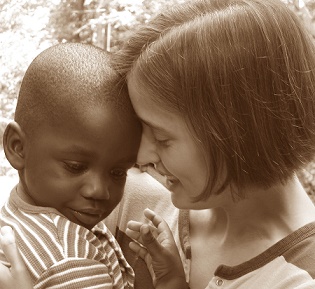Recently, as a friend and I were walking home from the neighborhood fitness center we encountered a casually dressed white man who looked to be about 30-something. He was pushing a trendy baby stroller. Riding in it was a cute, rosy-cheeked, infant with wispy tufts of blond hair. We exchanged polite greetings as we passed each other, and I waved at the infant who was sucking on her balled-up fist and curiously observing the sights around her.
“Wow,” I said after we were out of the man’s hearing range.
“What? Wow what?” my friend asked while looking around to see what might have caught my attention.
“I know this will sound crazy,” I say to her. “But I don’t see that much anymore.”
“See what?” she asked.
“A white person with a white child.”
To answer the question that you, dear reader, are probably asking yourself: Did she say that? Yes, she did. And I am as serious as a defendant pleading a case before Judge Judy.
Decades ago, during my youth, whenever I happened to see a white family, all of them were white. They looked like white families did on the fifties and sixties TV programs like Leave It to Beaver, Father Knows Best, and The Brady Bunch. Now, transracial adoption is changing the complexion of families in America. Except for a controversial Cheerios commercial and a few other contemporary TV ads, the situation is much more evident in real life than it is on the boob tube.
It is no longer uncommon to see white people in the supermarket, at social gatherings or strolling the street with their rainbow crew or shades of brown-skinned children.
And it isn’t just ordinary people who are adopting kids across racial lines. Celebrities are doing it, too. Most folks know about Angelina and Brad’s clan, but click on this link and you’ll see other public personalities who have adopted children of color.
I don’t pretend to know why Angelina and Brad adopted multiracial children. And although an interesting article on abcnews.com reveals that white babies are more expensive to adopt than black or biracial children, I seriously doubt if financial concerns had anything to do with Angie and Brad’s decision.
I’m neither criticizing nor praising the trend of transracial adoption. But I know that I am not the only person who wonders about the reasoning behind it and how the adopted child will fair in the long run. As it is with everything, people do what they do for their own reasons.
Numerous books and articles have been published on the subject of transracial adoptions by people who experienced it, including Black Baby White Hands, Brown Babies Pink Parents, and Inside Transracial Adoption. And some of the now adult, black adopted children candidly express their feelings in a Huffington Post article written by Danielle C. Belton.
The article reported one of the adoptees, LisaMarie Rollins, as saying, “Her parents tried to raise her in a “colorblind” environment, which she attributes to the idea that some white parents hold that their whiteness can protect their children from the harm of racism.” She continued, “It’s the idea that you can put this veil around [the child], this veil of white privilege.” She said that despite her parents best intentions, she still deals with the after effects of [her adoption.]
And while it is not as common for black parents to adopt white children, it’s been reported that there is one unique, troubling factor. Black parents with white children raise more suspicion when out in public than do whites with a black child. In a newsweek.com article What Adopting a White Girl Taught One Black Family, Mark and Katie Riding discuss the pitfalls that a well-meaning black couple can encounter after adopting a white child.
Somewhat comparable to the challenges met by transracial adoptees is the situation that mocha-skinned, biracial children may ultimately face. Their stories are in numerous blogs and articles written mostly by mothers of biracial children, disclosing some unpleasant experiences and expressing their concerns for their offspring. They, like most of us know that in spite of all the wishing, hoping, and – for some delusionists – pretending, we do not live in a color-blind society.
Recently, while discussing the racial and social ramifications that the children of transracial adoption and mixed-race parents experience, a pal of mine whose complexion is as dark as my own made an interesting statement. He said, “We may not live to see it, but it will be only a few generations into the future, before the black community in the U.S. will be completely devoid of dark-skinned people who are black like me.”

